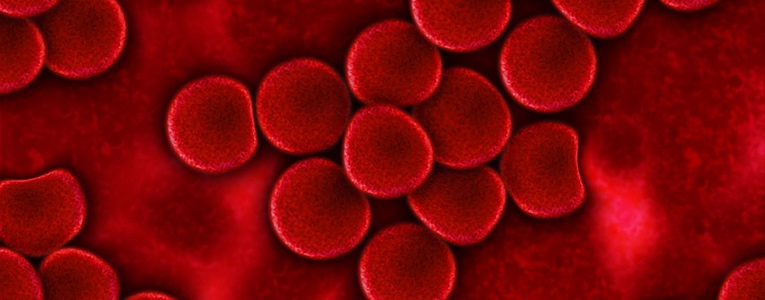
Response of patients with chronic hepatitis B in one year of treatment with major autohemotherapy
Abstract
There are multiple references that point to ozone therapy as an alternative in the treatment of Hepatitis B, because of the known and demonstrated antimicrobial and immunomodulatory properties. With these premises, we performed the present clinical study that included 28 patients with positive diagnosis of chronic Hepatitis B, surface antigen (HVBs Ag) positive, antibodies against surface antigen (HVBs) negative, viral load (HVB DNA ) and transaminaseselevated. These patients with 1 year of evolution and antiviral treatment were treated with Major Autohemotherapy with protocol of 15 sessions and maintenance every 15 days to 50 mcg of concentration, initial dose of 4,000 mcg / ml up to 12,000 mcg /ml
We indicate Ag HVBs, Ac HVBs, HVB Viral Loading and transaminases before starting treatment at 15 days of completion and quarterly until the year. The results showed negativization of the surface antigen, antibody positivity against the surface antigen, significant decrease of viral load to undetectable values and normal values of the transaminases demonstrating the functional recovery of the disease associated with favorable immunological response providing a better quality of patients' lives.
Key words: Hepatitis B, Transaminases, Ozone therapy, Major Autohemotherapy, Surface antigen, Surface Antigen Antibody.
Keywords
Full Text:
PDFReferences
WHO. Global health sector strategy on viral hepatitis 2016-2021. Genève: WHO; 2016. Available from: https://apps.who.int/iris/bitstream/handle/10665/246177/WHO-HIV0-2016.06-eng.pdf
WHO . Global hepatitis report 2017. Geneve: WHO; 2017. Available from: https://apps.who.int/iris/bitstream/handle/10665/255016/9789241565455-eng.pdf
Zoulim F, Locarnini S. Hepatitis B virus resistance to nucleoside analogues. Gastroenterology. 2009;137(5):1593-1608. doi: 10.1053/j.gastro.2009.08.063.
Robinson WS, Clayton DA, Greenman RL. DNA of a human hepatitis E virus candidate. J Virol. 1975;14:384-391. PubMed PMID: 4847328.
Oh IS, Park SH. Immune-mediated liver injury in hepatitis B virus infection. Immune network. 2015;15(4):191-198. doi: 10.4110/in.2015.15.4.191.
Vicente-Peña E. Medicina Interna. Diagnóstico y Tratamiento. 2 ed. La Habana: Editorial Ciencias Médicas; 2016.
Zaky S, Kamel SE, Hassan MS, Sallam NA, Shahata MA, Helal SR, et al. Preliminary results of ozone therapy as a possible treatment for patients with chronic hepatitis C. J Altern Complement Med. 2011;17(3):259-63. doi: 10.1089/acm.2010.0016.
Turkmen A, Kesice S, Elmali N, Cangir CC, Cakirguz M. Chronic B hepatitis and ozonotherapy. Journal of Case Reports in Practice. 2015;3(2):38-39.
Abba AK. Activation of lymphocytes. In: Cellular and Molecular Immunology. Abba AK, Lichtman A, editors. 7 ed. New York: WB Saunders Co; 2011. p. 203-224.
Díaz J, Martín N, Menéndez CS. Evaluación de la actividad inmunomoduladora del ozono sobre los leucocitos: in vivo e in vitro. Vaccimonitor. 2011;20(1):22-3.
Bocci V. Scientific and medical aspects of ozone therapy. State of the art. Arch Med Res. 2006;37:425-435. doi: 10.1016/j.arcmed.2005.08.006.
Piscoya A, Cedron H, Tangel M. Hepatitis B. Diagnostico. 2007;46(1):1.
Zamora Z, Borrego A. La mezcla gaseosa ozono-oxígeno incrementa la respuesta humoral contra el antígeno recombinante de superficie del virus de la hepatitis B en ratones. Revista CENIC Ciencias Biológicas. 2002;33(2):55-57.
Neronov VA. Experience with the use of ozone for the treatment of chronic viral hepatitis. Vopr Kurortol Fizioter Lech Fiz Kult. 2009;6:14-17.
Jiao XJ, Peng X. Clinilal study of medical ozone therapy in chronic hepatitis B of 20 patients. Zhonghua Shi Yan He Lin Chuang Bing Du Xue Za Zhi. 2008;22(6):484-5.
Gu XB, Yang XJ, Zhu HY, Xu YQ, Liu XY. Effect of medical ozone therapy on renal blood flow and renal function of patients with chronicsevere hepatitis. Chin Med J (Engl). 2010;123(18):2510-2513.
Refbacks
- There are currently no refbacks.
![]() Journal of Ozone Therapy (JO3T)
Journal of Ozone Therapy (JO3T)
The Official Peer Reviewed Journal of the World Federation of Ozone Therapy (WFOT)
ISSN 2444-9865
